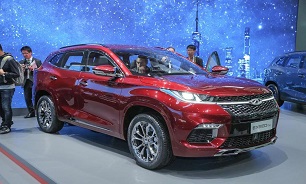Chinese car maker Chery to launch in Europe with all-electrified line-up
First models are due in 2019 with either part electric or full electric drivetrains.

Khodrocar - Chery, the Chinese car maker targeting a European debut in 2019/20, is promising to launch with a range comprising solely electrified models.
Setting out its high-tech future, company CEO Anning Chen told Autocar: "Every model will be electrified, either micro-hybrid, hybrid or plug-in hybrid. And, for sure, we will also have BEV [battery electric vehicles].”
Chery showed its hybrid powertrains at last month's Frankfurt motor show, with a 113bhp electric motor attached directly to the flywheel end of the transversely mounted, 147bhp 1.5-litre turbocharged petrol engine.
For its European launch, Chery will sell the Exeed TX, a 4.7m-long five-seat SUV sitting on a 2.7m-long wheelbase. Its contemporary bodywork was designed in Shanghai by Canadian James Hope, a former Ford designer who worked on the GT90 concept and 2005 Mustang. He joined Chery in 2012.
Hope’s design is centred around a large ‘waterfall’ grille. "I wanted to make a big statement for the front end,” he said. The intricate design is hot-stamped to give it a mirror finish.
A choice of two Getrag gearboxes will be offered, a sixspeed manual or seven-speed dual-clutch. Suspension is by front struts and rear multi-link.
The body was developed by German metalworking specialist Benteler and the four-wheel drive system by Dana and BorgWarner.
Weight is around 1700kg for the plug-in version, which has a lithium ion battery of around 12kWh and is said to be good for a 43-mile electric-only range. Its claimed acceleration of 6.0sec from rest to 62mph is brisk. Top speed is 124mph and NEDC fuel economy 156mpg.
According to engineering director Jochen Tueting, the Exeed TX is engineered to global safety and emissions standards. Although ready for series production, the cars shown at Frankfurt were preproduction and featured some parts and trim made using prototype tooling.
Tueting and Hope are relocating from China to Europe to find a location for a new Chery European design and engineering centre, which will be sited in Germany.
Although a UK site was a possibility, London was ruled out as too expensive a location and the complications of operating in Britain post-Brexit were also seen as a negative.
Berlin is a favourite for design but may be ruled out because it lacks a pool of engineering talent.
Source: Autocar
Latest News


